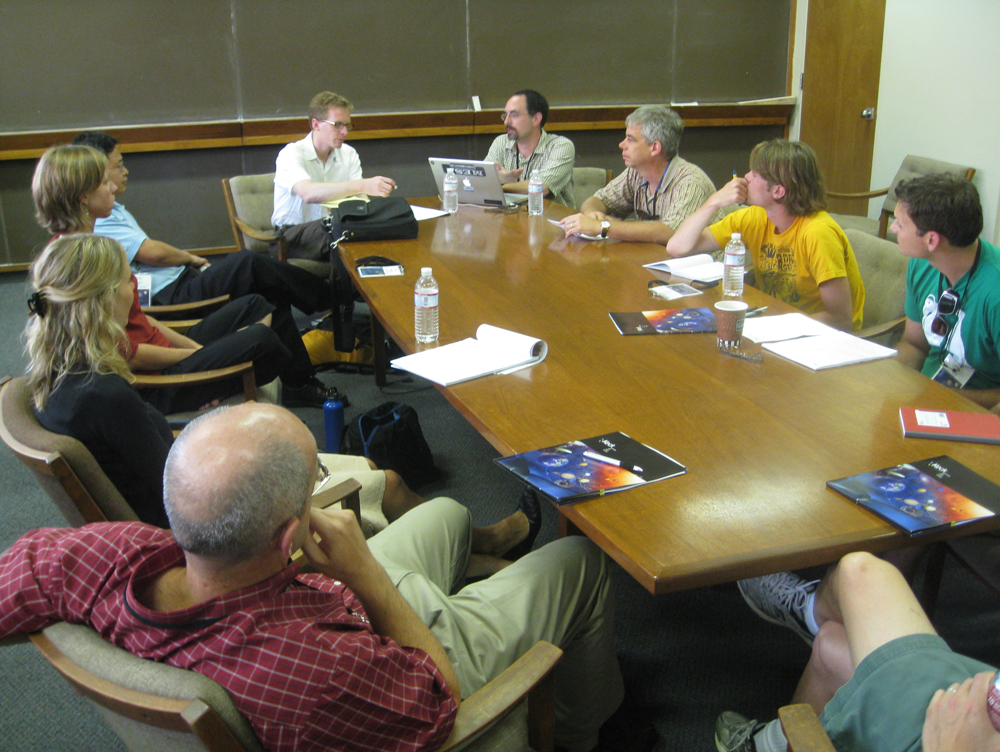Workshop Presentations
|
|
Joao Teixeira
JPL
Yuk Yung
Caltech
|
Study Overview
Week 1 (.pdf)
Week 2 (.pdf)
|
|
Tom Ackerman
University of Washington
|
Classification as a Tool for Understanding Cloud Feedback?
(.pdf)
|
|
Chris Bretherton
University of Washington
|
Cloud Feedback
(.pdf)
|
|
Andrew Dessler
Texas A&M University
|
Verifying the water vapor feedback using ENSO
(.pdf)
|
|
Eric J. Fetzer
JPL
|
What is the A-Train Telling Us about Atmospheric Water Vapor (and other feedbacks)?
(.pdf)
|
|
Andrew Gettelman
National Center for Atmospheric Research
|
Necessary but not sufficient conditions for constraining water vapor feedbacks
(.pdf)
|
|
Steve A. Klein
Lawrence Livermore National Laboratory
|
Using Ground-Based Remote-Sensors to Study Boundary-Layer Vertical Velocity Statistics
(.pdf)
|
|
Brian E Mapes
University of Miami
|
Free tropospheric moist processes and climate change feedbacks
(.pdf)
|
|
David Neelin
UCLA
|
Water vapor and the transition to strong convection
(.pdf)
|
|
David Noone
University of Colorado
|
Evaluating the rates of exchange in the tropospheric water budget
(.pdf)
|
|
Joel Norris
Scripps Institution of Oceanography
|
The Role of Dynamics in Cloud Feedbacks
(.pdf)
|
|
Olivier Pauluis
New York University
|
Isentropic analysis and atmospheric circulation
(.pdf)
|
|
Phil J. Rasch
Pacific Northwest National Laboratory
|
Uncertainties in Water vapor: Budgets in two versions of CAM (Track 1 and Track 5)
(.pdf)
|
|
William B. Rossow
City College of New York
|
Cloud—Climate Feedback
(.pdf)
|
|
Ben Santer
Lawrence Livermore National Lab
|
Observational constraints on the water vapor feedback: A search for the “Hall Effect”
(.pdf)
|
|
Tapio Schneider
Caltech
|
The relative humidity of the subtropical free troposphere
(.pdf)
|
|
Pier Siebesma
Royal Netherlands Meterological Institute
|
The difficult art of evaluation clouds and convection representation in GCM’s
(.pdf)
|
|
Graeme L. Stephens
Colorado State University
|
Low Cloud Feedbacks
(.pdf)
|
|
Hui Su
JPL
|
Examining Cloud Structure and Cloud Radiative Forcing in Large-Scale Regimes
(.pdf)
|
|
Joao Teixeira
JPL
|
Cloud Boundary Layers: PDFS and Vertical Structures
(.pdf)
|
|
Darryn W. Waugh
Johns Hopkins University
|
PDFS of Tropospheric Humidity: Measurements and Theory
(.pdf)
|
|
John R. Worden,
Kevin Bowman
JPL
|
Using Satellite Based Measurements of Water Vapor and its Isotopes to Quantify Water Cycle Sources and Processes
(.pdf)
|
|
Dong L Wu
JPL
|
Observing Cloud Properties and Processes from the A-Train and Future Sensors
(.pdf)
|
|
Paquita Zuidema
RSMAS/University of Miami
|
Connecting dynamics to boundary layer cloud properties
(.pdf)
|



















